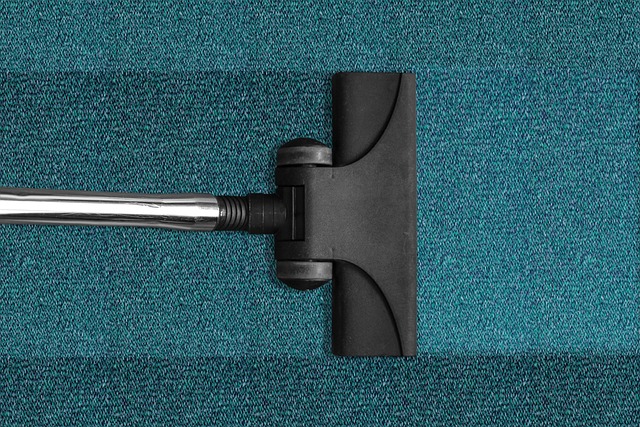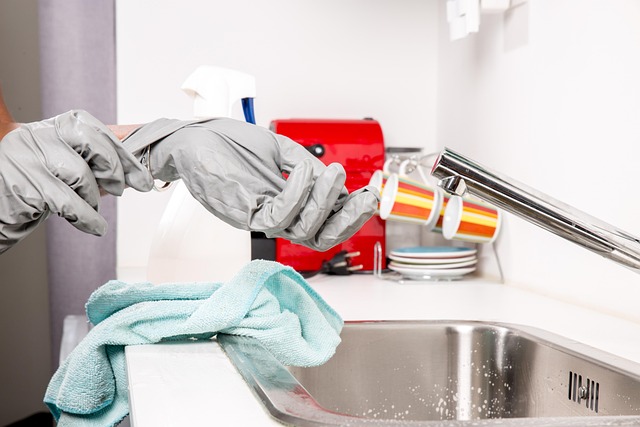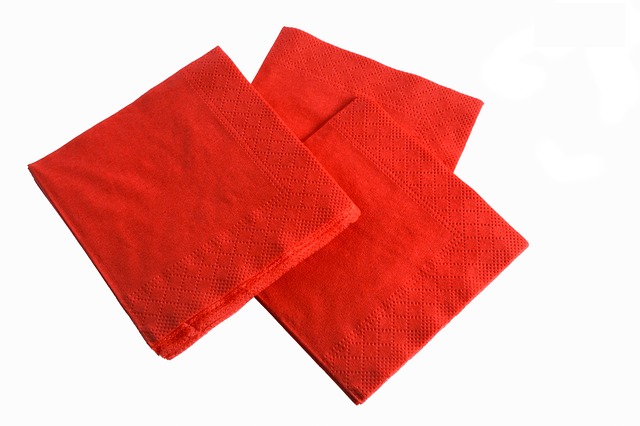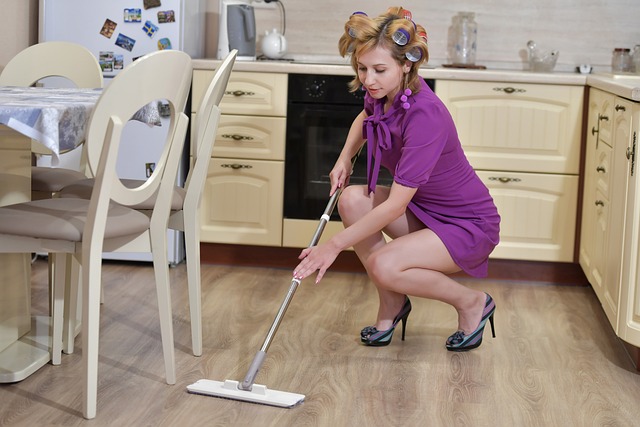Maintaining a clean kitchen floor is straightforward with a consistent routine. Daily sweeping/vacuuming and weekly mopping with mild detergent keep it sparkling. Promptly cleaning spills prevents damage. Using floor protectors under heavy furniture legs guards against scratches. Natural, budget-friendly solutions like vinegar, baking soda, and essential oils are effective and eco-conscious. Regular maintenance, spot cleaning, and protective treatments preserve the floor's appearance and lifespan. Durable, low-maintenance flooring options like vinyl, laminate, tile, concrete, and linoleum offer long-term savings on care.
Looking to keep your kitchen floor sparkling and in top condition without breaking the bank? This guide is your ultimate resource for affordable kitchen floor care. We’ll walk you through understanding different flooring materials, mastering regular cleaning routines, and discovering natural, budget-friendly solutions. From spot cleaning techniques to efficient disinfection methods and DIY restoration projects, learn how to prolong your kitchen floor’s lifespan while staying within your budget.
Understanding Your Kitchen Floor: Different Materials and Their Care Needs

Understanding your kitchen floor is key to effective and affordable floor care. Different materials, from tile and wood to vinyl and linoleum, have unique care requirements. For instance, ceramic tiles may only need regular mopping with a mild detergent, while hardwood floors require specialized cleaning solutions to prevent water damage and maintain their finish. Vinyl flooring, known for its durability and low maintenance, can be cleaned with a damp mop and mild soap. Linoleum, eco-friendly and naturally non-toxic, should be wiped down with a dry cloth and occasionally treated with a food-safe cleaner.
Identifying your floor material allows you to choose the right cleaning tools and products, ensuring optimal care without unnecessary spending. Regular inspection also helps catch potential issues early on, preventing small problems from turning into costly repairs. By understanding and catering to your kitchen floor’s specific needs, you can keep it looking its best while maintaining a budget-friendly approach to cleaning.
Regular Cleaning Routines for a Sparkling Kitchen Floor

Keeping your kitchen floor sparkling clean doesn’t have to be a daunting task or break the bank. Establishing a regular cleaning routine is key to maintaining a pristine kitchen floor. Start by sweeping or vacuuming daily to remove loose dirt, crumbs, and debris. This simple step prevents particles from settling and deepening stains. For more thorough cleaning, use a mild detergent suitable for your floor type, be it tile, vinyl, or wood. Apply the solution with a mop and ensure you rinse well to avoid residue build-up.
Don’t forget to address spills promptly as they can lead to water damage and discolouration. Regular mopping not only keeps your kitchen floor clean but also helps in disinfecting it, especially during times of increased hygiene awareness. Additionally, consider using floor protectors under heavy furniture legs to prevent scratches and scuffs that can make your floor look worn out faster.
Natural and Budget-Friendly Cleaning Solutions for Kitchen Floors

Keeping your kitchen floors clean doesn’t have to break the bank. Natural, budget-friendly cleaning solutions are an eco-conscious and cost-effective way to maintain a sparkling kitchen. Vinegar, for instance, is a versatile cleaner that can cut through grease and grime effectively. Combining equal parts vinegar and water in a spray bottle creates a powerful yet gentle cleaning agent suitable for most kitchen floors. Baking soda is another affordable powerhouse; mixing it with a bit of water forms a paste ideal for scrubbing stubborn stains.
Essential oils add a refreshing aroma to your cleaning routine without the need for harsh chemicals. Lemon essential oil, when mixed with water and sprayed onto floors, leaves a fresh scent and aids in cutting through soap scum. These natural solutions not only save you money but also contribute to a healthier living environment, making kitchen floor care both economical and eco-friendly.
The Art of Spot Cleaning: Tackling Stains Without Breaking the Bank

Keeping your kitchen floor clean doesn’t have to be a costly endeavor. The art of spot cleaning is a budget-friendly approach that can effectively tackle everyday stains. When it comes to kitchen floor care, addressing spills and messes promptly is key. Whether it’s a dropped glass of red wine or a spill from the morning coffee, acting fast prevents deep penetration of stains, making them easier to remove.
Invest in a few essential cleaning supplies: a good quality vinegar, baking soda, and a microfiber cloth. Vinegar is an excellent natural cleaner for kitchen floors, cutting through grease and grime while leaving a fresh scent. Baking soda acts as a mild abrasive, helping to scrub away stubborn stains. These simple ingredients can be mixed to create a powerful yet affordable cleaning solution. A microfiber cloth is ideal for applying the mixture and drying the floor, ensuring no streaking or residue remains.
Efficient Ways to Disinfect Your Kitchen Floor on a Limited Budget

Keeping your kitchen floor clean and disinfected is essential for maintaining a healthy living space, especially with the constant foot traffic and potential spills. Disinfecting regularly can seem costly, but there are numerous budget-friendly methods to achieve a gleaming, germ-free surface. One of the simplest and most effective ways is to create a natural cleaning solution using white vinegar and water. This mixture cuts through grease, grime, and mild stains while leaving a fresh scent. Simply spray it onto the floor and use a mop or sponge to scrub away dirt, with no harsh chemicals required.
Another cost-saving tip is to make use of common household items like baking soda and lemon juice. Baking soda acts as a natural deodorizer and mild abrasive, making it perfect for removing stubborn marks without scratching the floor’s surface. Mix it with lemon juice to create a paste, apply it to the floor, let it sit for a few minutes, then scrub and rinse. This simple process not only deep cleans but also adds a refreshing citrus aroma to your kitchen. Regular mopping with warm water and a mild dish soap is another efficient way to keep your kitchen floor clean and disinfected without breaking the bank.
Maintenance Tips to Prolong the Lifespan of Your Kitchen Floor

Proper maintenance is key to keeping your kitchen floor in top condition and extending its lifespan. Regular cleaning plays a vital role; sweep or vacuum daily to remove loose dirt and debris, and use a mild detergent or floor cleaner once a week for deep cleaning. Avoid harsh chemicals and excessive water, as they can damage the flooring, especially in the long run.
For durable kitchen floors, consider a combination of methods: spot clean quickly to prevent stains from setting, use a microfiber mop for efficient dust and dirt removal, and don’t forget to treat your floor with a suitable protector or sealer. These measures will help maintain the floor’s appearance, prevent scratches, and guard against moisture damage, ensuring your kitchen remains inviting and practical for years to come.
DIY Floor Restoring Projects for a Fresh Look

Revitalize your kitchen floor with DIY floor restoring projects and give it a fresh look without breaking the bank. Many kitchen floors can benefit from simple yet effective cleaning and restoration techniques that are both cost-effective and easy to implement. Start with sweeping or vacuuming regularly to remove dirt and debris, then move on to mopping with a mild detergent suitable for your floor type. For more intense cleaning, try creating a homemade cleaner using vinegar and water, which is excellent for removing stubborn stains without harsh chemicals.
For a deeper restore, consider sanding the floor to smooth out imperfections and remove old finishes. This labor-intensive method can be time-consuming but offers significant results. After sanding, apply a fresh coat of sealer or finish to protect and enhance the floor’s appearance. These DIY projects not only save you money but also give you creative control over your kitchen’s aesthetics.
Choosing the Right Flooring Option for Your Budget-Friendly Kitchen Makeover

When planning an affordable kitchen makeover, selecting the right flooring is a crucial step in achieving a beautiful and functional space without breaking the bank. Opting for durable and low-maintenance options can significantly impact your long-term savings on kitchen floor care. Vinyl and laminate floors are popular choices due to their affordability and ease of installation. These materials mimic the look of wood or stone, offering a stylish aesthetic at a fraction of the cost. Regular cleaning with mild soap and water is usually sufficient to keep them looking fresh.
Another budget-friendly option is ceramic tile, which can be a long-lasting and versatile choice. While it may require more effort in terms of installation, tiles are easy to clean and maintain. A simple sweep or vacuum, followed by mopping with a mild detergent, will keep the tiles sparkling. For an even more cost-effective solution, consider concrete or linoleum floors. These options can be sealed and maintained with basic cleaning products, ensuring they remain in excellent condition while being kind to your wallet. When choosing, remember to factor in not only initial costs but also long-term durability and ease of upkeep for efficient kitchen floor cleaning.
